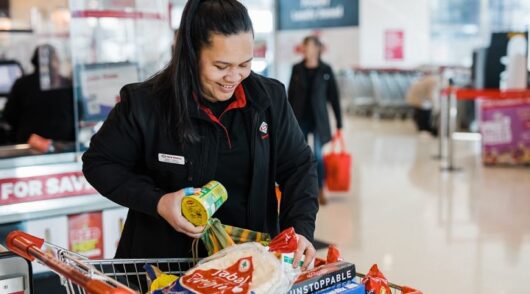As inflation and rising interest rates start to bite and reduce consumers’ spending capacity and confidence, Australian e-commerce sales declined sharply in July.
According to new figures from global e-commerce and marketplace accelerator Pattern, online retail sales in July across Australia declined by 34 per cent compared to the same period last year.
There were some positives in the figures, with the average value of online orders in July marking the second highest month of revenue this year. However, these positives are likely attributable to a range of factors – including inflation, fewer sales promotions being pushed by brands this year and more big-ticket holidays and high full-price items being sold – as opposed to consumers buying more, given the number of units purchased per online sale actually fell 19 per cent.
While the comparison of July 2022 and 2021 online sales isn’t a fair like-for-like comparison – e-commerce was surging between July and October 2021 due to lengthy lockdowns in both Victoria and NSW – with inflation and cost-of-living pressures continuing to increase, we are seeing that buyers are also becoming increasingly discerning and investing more in key (or highly desired) items.
You can download the July eCommerce Benchmark report here.
This trend is likely to continue over the next year where the majority of brand turnover growth is likely to come from price increases rather than sales volume growth.
Changing online buying behaviour over the past year
Representing 19.3 per cent of retail spending in the country during the last financial year, e-commerce’s share of wallet is significant.
Yet, while consumer spending per online transaction for the last financial year increased (peaking at $149 in June), it did so at a rate lower than inflation and the actual size of shopping carts declined, with units per order shrinking by 13 per cent on average across the year.
Positively, local brands improved their sales conversion rates by 11 per cent over the past year due to renewed investment in digital activity, for an average conversion rate of 2.49 per cent. This led to impressive average e-commerce revenue growth of 22 per cent for brands.
However, much of this growth was down to online conversions being high during 2021 lockdowns and in July 2022 the conversion rate declined in line with a drop in the number of transactions to 1.92 per cent
Search engines
In the past year, 60 per cent of e-commerce shopper traffic was driven by Search Engines, representing a 28 per cent year-on-year growth.
In July there was a significant increase in people searching for specific brands and locations compared to the previous month. This shows that consumers are researching online to find the product they are after before they head to a retail store to buy it. This led to a decrease in search revenue of 35 per cent compared with the same time last year, when consumers were largely in lockdown and had to purchase online.
Desktop and tablet
While desktop and tablet e-commerce sales activity decreased over the last financial year, mobile sessions increased by 11 per cent, bringing its total share of traffic to 70 per cent. In July, this further increased to its highest level in 18 months – 73 per cent – reflecting the growing number of people travelling and commuting to work.
With mobile devices dominating the consideration and purchasing phases of the online buyer journey today, brands need to tailor their marketing and online stores to accommodate these devices. Ensuring that products are easily discoverable and with seamless purchasing options through mobile devices will only become more important in the future.
Download a summary of FY22 e-commerce performance here.
What lies ahead
Online retail is set for some testing months ahead, as cost of living pressures are projected to become only more intense. Brands are challenged in this environment to understand the opportunity, defend their current position accelerate their performance to see continued growth.
For more information, visit: https://pattern.com/au/ or email au@pattern.com.
About the author: Merline McGregor is GM at Pattern Australia.






